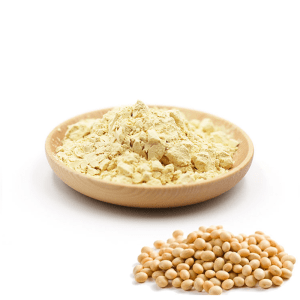
Keyword: Soy Fiber
# Soy Fiber: A Sustainable and Nutritious Dietary Option
## Introduction to Soy Fiber
Soy fiber, derived from the soybean plant, has gained significant attention in recent years as a sustainable and nutritious dietary option. As the world shifts toward more eco-friendly and health-conscious food choices, soy fiber stands out as a versatile ingredient that offers numerous benefits.
## Nutritional Benefits of Soy Fiber
One of the primary reasons for the growing popularity of soy fiber is its impressive nutritional profile. Rich in dietary fiber, soy fiber aids in digestion and helps maintain a healthy gut. Additionally, it is a good source of plant-based protein, making it an excellent option for vegetarians and vegans.
Soy fiber also contains essential vitamins and minerals, including iron, calcium, and magnesium. These nutrients contribute to overall health, supporting bone strength, energy levels, and immune function.
## Environmental Sustainability
Beyond its nutritional advantages, soy fiber is celebrated for its environmental benefits. Soybeans require less water and land compared to many other crops, making them a more sustainable choice. The production of soy fiber also generates fewer greenhouse gas emissions, aligning with global efforts to combat climate change.
Furthermore, soy fiber is often a byproduct of soybean processing, which means it utilizes parts of the plant that might otherwise go to waste. This reduces food waste and promotes a circular economy.
## Culinary Uses of Soy Fiber
Soy fiber’s neutral taste and adaptable texture make it a favorite among chefs and home cooks alike. It can be incorporated into a variety of dishes, from baked goods to meat substitutes. Here are some common uses:
– Baking: Soy fiber can be added to bread, muffins, and cookies to boost fiber content without altering flavor.
– Meat Alternatives: It is often used in plant-based burgers and sausages to improve texture and nutritional value.
– Smoothies: A spoonful of soy fiber can enhance the fiber content of your morning smoothie.
– Soups and Stews: It acts as a thickening agent while adding nutritional benefits.
## Health Considerations
While soy fiber is generally safe for most people, those with soy allergies should avoid it. Additionally, consuming excessive amounts of fiber without adequate hydration can lead to digestive discomfort. It’s always best to introduce soy fiber gradually into your diet and drink plenty of water.
## Conclusion
Soy fiber is a remarkable ingredient that combines sustainability with nutrition. Whether you’re looking to improve your diet, reduce your environmental footprint, or explore new culinary possibilities, soy fiber is a worthy addition to your pantry. Its versatility and health benefits make it a standout choice in the world of plant-based foods.